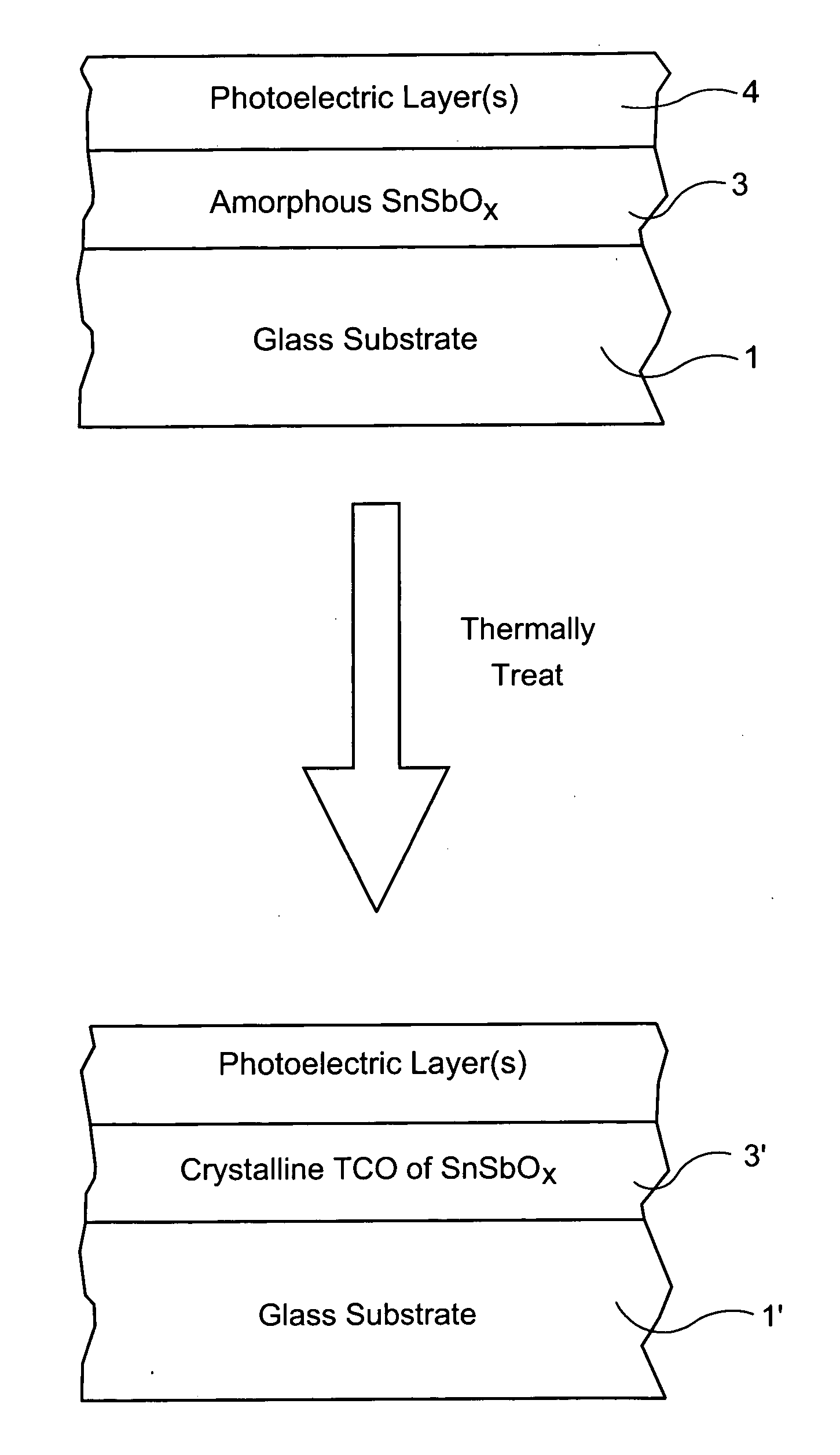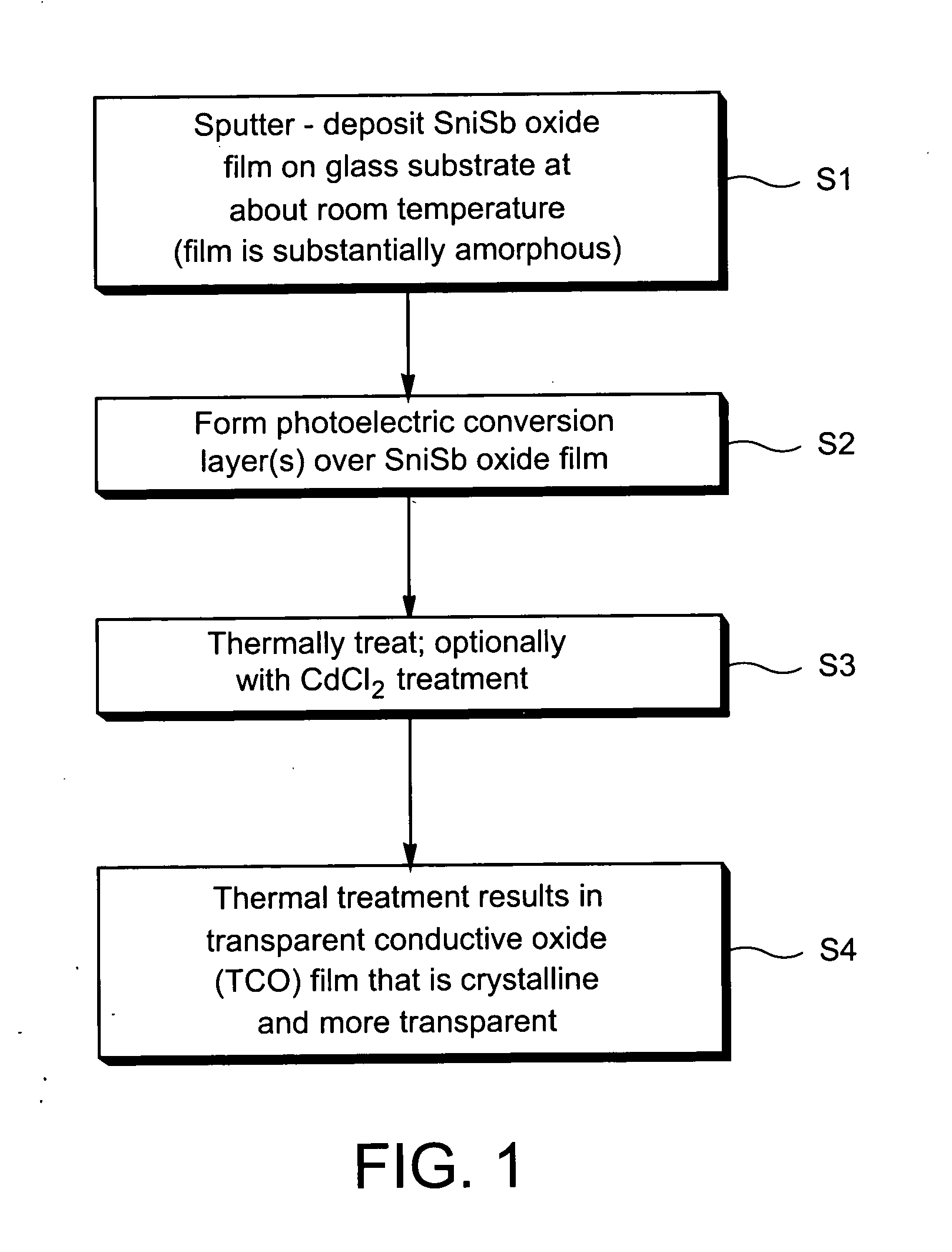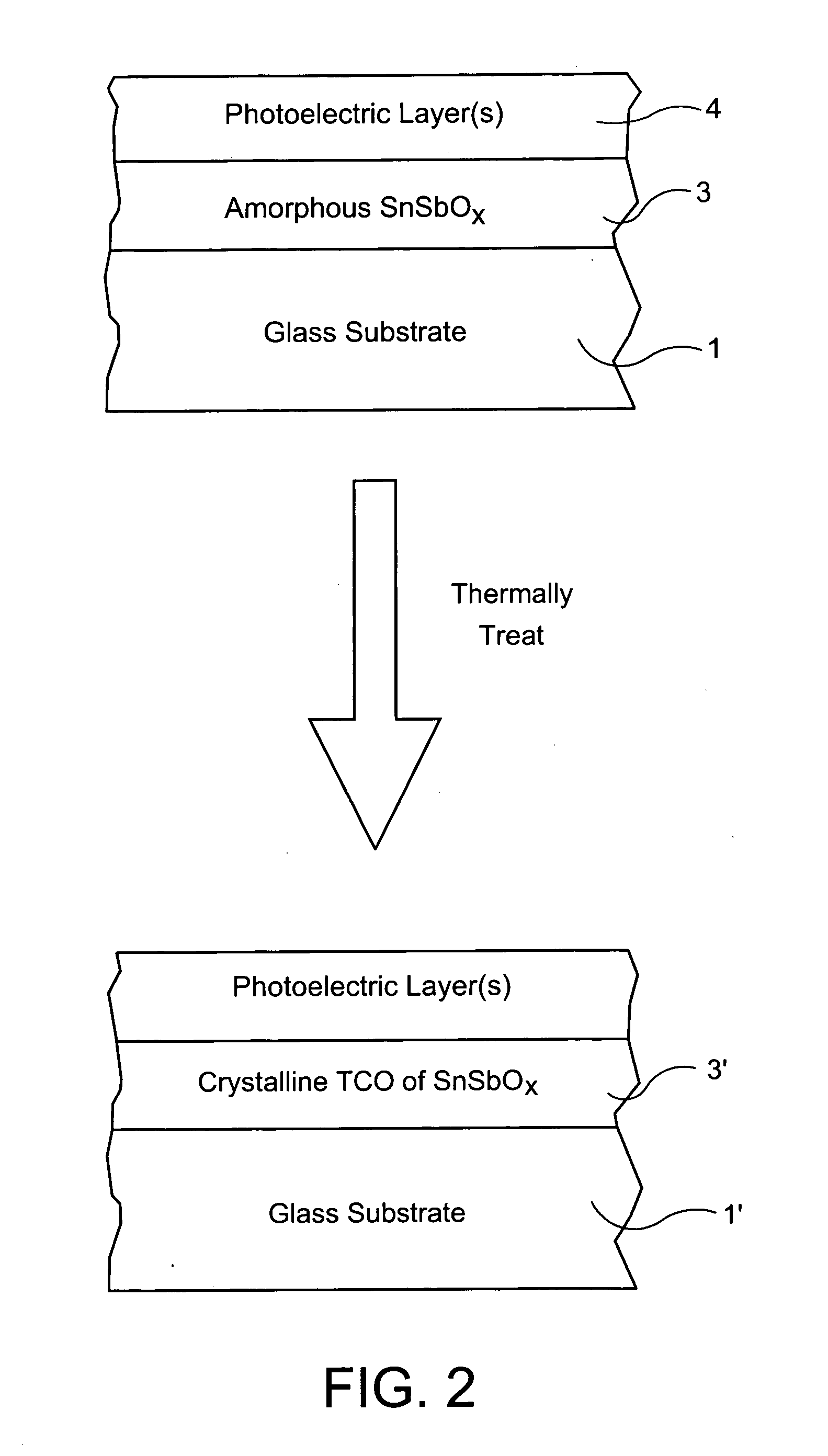Method of making a thermally treated coated article with transparent conductive oxide (TCO) coating for use in a semiconductor device
a technology of transparent conductive oxide and coating, which is applied in the direction of vacuum evaporation coating, coating, semiconductor devices, etc., can solve the problems of reducing the ability of species, and requiring such high glass substrate temperatures, so as to reduce the fermi level, prevent or reduce the formation of compensating, and reduce the mobility of atoms
- Summary
- Abstract
- Description
- Claims
- Application Information
AI Technical Summary
Benefits of technology
Problems solved by technology
Method used
Image
Examples
Embodiment Construction
[0016] Coated articles including conductive layer(s) according to certain example non-limiting embodiments of this invention may be used in applications including semiconductor devices such as photovoltaic devices, and / or in other applications such as oven doors, defrosting windows, display applications, or other types of windows in certain example instances. For example and without limitation, the transparent conductive oxide (TCO) layers discussed herein may be used as electrodes in solar cells, as heating layers in defrosting windows, as solar control layers in windows, and / or the like. For example, the TCO film may be used as a front electrode or front contact in a photovoltaic device in certain example instances.
[0017]FIG. 1 is a flowchart illustrating certain steps performed in making a coated article according for use in a semiconductor device according to an example embodiment of this invention, whereas FIG. 2 illustrates this example embodiment in terms of a cross sectiona...
PUM
| Property | Measurement | Unit |
|---|---|---|
| Fraction | aaaaa | aaaaa |
| Fraction | aaaaa | aaaaa |
| Transparency | aaaaa | aaaaa |
Abstract
Description
Claims
Application Information
 Login to View More
Login to View More - R&D
- Intellectual Property
- Life Sciences
- Materials
- Tech Scout
- Unparalleled Data Quality
- Higher Quality Content
- 60% Fewer Hallucinations
Browse by: Latest US Patents, China's latest patents, Technical Efficacy Thesaurus, Application Domain, Technology Topic, Popular Technical Reports.
© 2025 PatSnap. All rights reserved.Legal|Privacy policy|Modern Slavery Act Transparency Statement|Sitemap|About US| Contact US: help@patsnap.com



